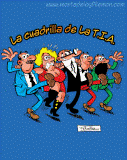Swimming is movement by humans in water, usually without artificial assistance
There are four swimming styles commonly swum in competitions. Three of them are regulated by the FINA
Breaststroke
Breaststroke is a swimming style swum on the breast. It is the most popular recreational style due to its stability and the ability to keep the head out of the water at all times.
Backstroke
Backstroke also sometimes called back crawl is one of the four swimming styles regulated by FINA, and the only regulated style swum on the back. This has the advantage of easy breathing, but the disadvantage of not seeing where the swimmer is heading to.
Butterfly stroke
The butterfly, (fly for short) is a swimming stroke swum on the breast, with both arms moving simultaneously. The butterfly kick was developed separately, and is also known as the "dolphin kick".
Freestyle swimming
Freestyle is one of the official swimming competitions according to the rules of FINA. Although it is technically not a style, its frequent use in this manner is evolving its original meaning. This style is generally the fastest
Time
viernes, 7 de diciembre de 2007
jueves, 6 de diciembre de 2007
climbing
Climbing is the activity of using one's hands or feet to ascend a steep object. It is done both for recreation and professionally, as part of activities such as maintenance of a structure, or military operations.
Climbing activities include:
Mountain climbing (Mountaineering): Ascending mountains for sport or recreation. It often involves rock and/or ice climbing.
Rock climbing: Ascending rock formations, often using climbing shoes and a chalk bag. Equipment such as ropes, bolts, nuts, hexes and camming devices are normally employed, either as a safeguard or for artificial aid.
Ice climbing: Ascending ice or hard snow formations using special equipment designed for the purpose, usually ice axes and crampons. Protective equipment is similar to rock climbing, although protective devices are different (ice screws, snow wedges).
Bouldering: Ascending boulders or small outcrops, often with climbing shoes and a chalk bag or bucket. Usually, instead of using a safety rope from above, injury is avoided using a crash pad (a combination of high and low density foam, within a heavy duty fabric structure, often transported on the back) and a human spotter (to direct a falling climber on to the pad).
Buildering: Climbing urban structures - usually without equipment - avoiding normal means of ascent like stairs and elevators. Aspects of buildering can be seen in the art of movement known as Parkour.
Tree climbing: Ascending trees without harming them, using ropes and other equipment. This is a less competitive activity than rock climbing.
Rope climbing: Climbing a short, thick rope for speed. Not to be confused with roped climbing, as in rock or ice climbing.
Pole climbing (gymnastic): Climbing poles and masts without equipment.
Pole climbing (lumberjack): Lumberjack tree-trimming and competitive tree-trunk or pole climbing for speed using spikes and belts
Climbing activities include:
Mountain climbing (Mountaineering): Ascending mountains for sport or recreation. It often involves rock and/or ice climbing.
Rock climbing: Ascending rock formations, often using climbing shoes and a chalk bag. Equipment such as ropes, bolts, nuts, hexes and camming devices are normally employed, either as a safeguard or for artificial aid.
Ice climbing: Ascending ice or hard snow formations using special equipment designed for the purpose, usually ice axes and crampons. Protective equipment is similar to rock climbing, although protective devices are different (ice screws, snow wedges).
Bouldering: Ascending boulders or small outcrops, often with climbing shoes and a chalk bag or bucket. Usually, instead of using a safety rope from above, injury is avoided using a crash pad (a combination of high and low density foam, within a heavy duty fabric structure, often transported on the back) and a human spotter (to direct a falling climber on to the pad).
Buildering: Climbing urban structures - usually without equipment - avoiding normal means of ascent like stairs and elevators. Aspects of buildering can be seen in the art of movement known as Parkour.
Tree climbing: Ascending trees without harming them, using ropes and other equipment. This is a less competitive activity than rock climbing.
Rope climbing: Climbing a short, thick rope for speed. Not to be confused with roped climbing, as in rock or ice climbing.
Pole climbing (gymnastic): Climbing poles and masts without equipment.
Pole climbing (lumberjack): Lumberjack tree-trimming and competitive tree-trunk or pole climbing for speed using spikes and belts
lunes, 3 de diciembre de 2007
presentation
In this blog, we speak about the relation between sports and a subjects in school.
The blog members are:
-Rodrigo, the coordinator
-Pedro, the picture producer
-Jose manuel, researcher information
-Adrian, Manzano and Oude, charge of computering and researcher information
Oude has an other responsabilits, writing the information.
We use the blog to learn english and to show information about sports and nature.
The blog members are:
-Rodrigo, the coordinator
-Pedro, the picture producer
-Jose manuel, researcher information
-Adrian, Manzano and Oude, charge of computering and researcher information
Oude has an other responsabilits, writing the information.
We use the blog to learn english and to show information about sports and nature.
Suscribirse a:
Entradas (Atom)






